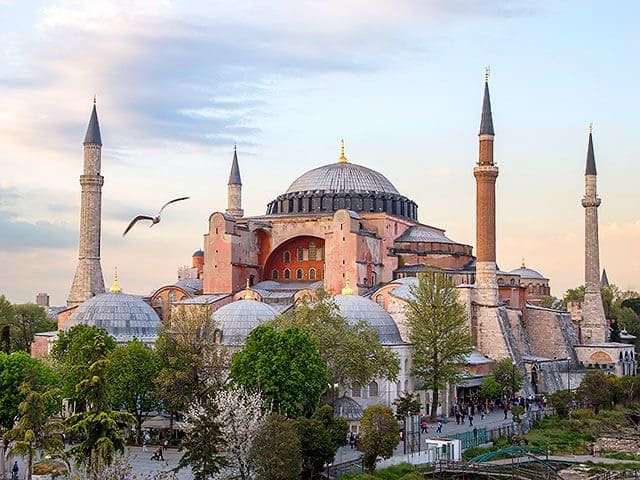A place where two religions meet. Building visited by more than 3 million people every year. A shrine that has preserved its history. Hagia Sophia.
And the history of this cathedral does not begin with the construction itself. The building we see now is the third construction of the cathedral. The first building of Hagia Sophia was destroyed in a great fire. Today there is nothing left of that building. The second cathedral of St. Sophia was built in the 4th century during the reign of Theodosius II. This church was destroyed during the Nicene riots. Then the Cathedral of St. Sophia that we see today was built in the 5th century.
Dome Of St. Sophia

Such titanic work brought fruits on a global scale. The dome of Hagia Sophia was the largest in the 6th century. However, it was not only the largest dome, but it was also uniquely shaped. It was the first dome to completely cover the entire prayer area. Previously churches or temples had roofs, but Hagia Sophia Cathedral was the first in the world to use a central dome plan. Today the dome of Hagia Sophia is the fourth largest after St. Peter’s in the Vatican, St. Paul’s in London, and the Duomo in Florence. The strength of the walls of the temple is achieved, according to Turkish researchers, by adding ash leaf extract to the construction mortar.
It is said that in the 6th century an angel with a model of a grandiose temple in his hands appeared to Emperor Justinian. However in 1453 Constantinople has fallen, sultan Mehmet has ridden on a horse to a temple and has enjoined to reconstruct a building in a mosque. On the wall at the altar you can still see the imprint of his bloodied hand.
At first the frescoes were covered with plaster, but later those places were restored and now there are both Christian icons and ayats from the Koran inside the cathedral.

Museum formation of St. Sophia
Only in 1935, Kemal Ataturk by a special decree transformed it into a museum. In 1985 the St. Sophia Cathedral among other monuments of the historic center of Istanbul was included in the UNESCO World Heritage List. In 2020, Turkish President Tayyip Erdogan signed a decree transforming the Hagia Sophia into a mosque.
An inexplicable phenomenon – one of the columns of the temple constantly emits moisture, the marble has been weeping for a thousand and a half years, invariably considered a miracle by both Orthodox and Muslims. Only the legends about the reasons have changed. In the 11th century Gregory the Wonderworker appeared near the column, after which the stone began to secrete healing tears. There is a belief that by touching the column you can get rid of all diseases. Also, many believe that the column can make wishes come true.
And for more than a thousand years, people believe in the wisdom of St. Sophia, who will always hear them. And the name Sophia in translation from Greek really does mean “wisdom”.






